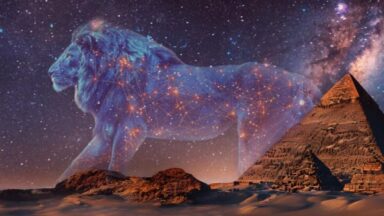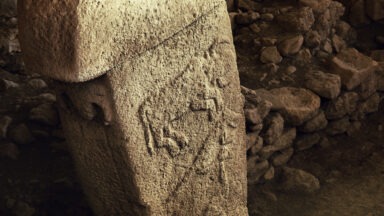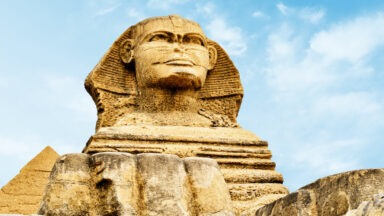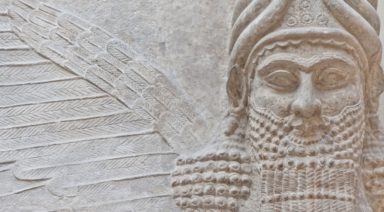What is the Code of Ur Nammu?

Unless you’re a member of law enforcement or an attorney, you probably don’t think too much about the laws that govern you on a daily basis. That’s not to say you’re oblivious — you’re probably just so used to certain laws that you wouldn’t think twice about keeping to or breaking them.
The origins of these laws, however, provide important insight into human civilization. Some of the laws we have in place today can be traced back to ancient times — specifically to someone called Ur Nammu.
Who was Ur Nammu?
Ur Nammu was a Sumerian king who lived around the year 2000 BC. He founded the third dynasty of Ur and initiated what is now known as the “Sumerian Renaissance,” a period of time in which Sumerian society heavily emphasized the arts and culture.
Achievements of Ur Nammu
Ur Nammu is praised for his myriad achievements, including but not limited to:
- The building of the Great Ziggurat of Ur: This ancient Sumerian structure, located in present-day Iraq, is thought to have been a temple dedicated to the moon god Nanna.
- Overthrowing the Gutians: Ur Nammu followed in his father-in-law Utu-Hegel’s footsteps to drive the Gutian people out of the Sumerian cities.
- Conquering other cities including Eridu
- Revitalizing Sumerian culture: Ur Nammu spearheaded projects such as planting orchards, revitalizing the arts, and strengthening Sumer’s infrastructure and economy.
Among all of Ur Nammu’s achievements, the Code of Ur Nammu is arguably the most significant.
Code of Ur Nammu
The Code of Ur Nammu is the oldest legal code that exists in the world today. It was discovered by Samuel Kramer in 1952 in southeast Iraq — the site of the ancient city of Nippur. It is inscribed on clay cuneiform tablets and details nearly 60 laws.
The Code of Ur Nammu is older than the Code of Hammurabi, which dates back to roughly 1754 BC, and even the Ten Commandments, which was one of the earliest and most recognized concepts of laws.
The Code of Ur Nammu is distinct from these two law codes for reasons aside from its age. Unlike the Ten Commandments, the laws listed in the Code of Ur Nammu are not dictated by a god or religious figure but by the government. Compared to the Code of Hammurabi’s “eye-for-an-eye” rationale, each law is written in a “cause-and-effect” format, listing each crime and its respective punishment.
Here are just a few of the laws found in the Code of Ur Nammu:
- If a man commits a murder, that man must be killed.
- If a man commits a kidnapping, he is to be imprisoned and pay 15 shekels of silver.
- If a slave marries a slave, and that slave is set free, he does not leave the household.
- If a man violates the right of another and deflowers the virgin wife of a young man, they shall kill that male.
- If a man proceeded by force and deflowered the virgin female slave of another man, that man must pay five shekels of silver.
- If a man divorces his first-time wife, he shall pay (her) one mina of silver.
Impact of the Code of Ur Nammu
Obviously, the law has come a long way since the age of Ur Nammu’s reign. However, the Code is very noteworthy for a number of reasons and has greatly influenced the laws we have in place today.
First and foremost, this is the oldest code of laws ever discovered, meaning it set the precedent for other laws written thereafter. It is particularly noteworthy because of the format in which the laws are written. Unlike the Babylonian “eye-for-an-eye” laws, the Code of Ur Nammu listed laws in a cause-and-effect format (i.e. “if this, then that”) that specifically outlined the crimes and their respective punishments.
Secondly, the Code of Ur Nammu introduced the concept of fines as a form of punishment — a notion we still rely on today. Fines ranged from minas and shekels of silver to kurs of barley.
Finally, the Code of Ur Nammu identified murder and rape as capital offenses. Murder is still considered a capital offense under the United States Code; however, rape is not unless it results in the death of the victim.
Although it was written thousands of years ago, the Code of Ur Nammu continues to affect our lives. By outlining laws in a cause-and-effect format, Ur Nammu set a precedent that would eventually become the norm.
The Future of the Laws
As we’ve experienced throughout history, laws are hardly set in stone. We’ve seen some pretty significant changes in the law over the years, from the abolishment of slavery to the legalization of same-sex marriage. Elections and even petition websites such as Change.org have an enormous influence on laws, putting the power back in the hands of the people. Only time will tell how our laws will continue to evolve and change.
Want more like this article?
Don’t miss Ancient Civilizations on Gaia to journey through humanity’s suppressed origins and examine the secret code left behind by our ancestors.
Giant Human Skeletons Found Buried in Mounds Across North America

Around the turn of the 19th century, there were hundreds of reports from reputable sources of giant skeletons unearthed from ancient burial mounds across America. Human giants are not entirely a product of legend in our history.
André the Giant is a known example of a man with superhuman proportions and strength, reaching 7 feet 4 inches tall. But André’s size was the result of gigantism and acromegaly, disorders caused by an overactive pituitary gland, which releases too much growth hormone. And with the average human height at 5 feet 6 inches for men and 5 feet 2 inches for women, it’s rare to find someone of André’s height, let alone his stature.
With the extreme rarity of gigantism, affecting roughly three in a million, it’s surprising how often giants are spoken of in the Bible and North American folklore. David and Goliath, Jack and the Beanstalk, and Paul Bunyon are familiar examples of tales involving giants. But while these are thought to be myths or legends, is there any possibility that a race of giants once existed or were there humanoid ancestors significantly larger than us?





































